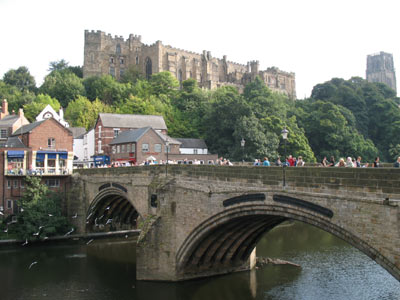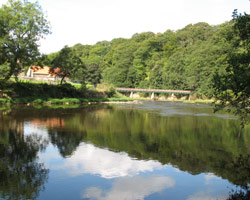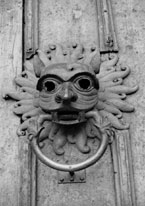
CHESTER-LE-STREET TO DURHAM

"Durham is one of the great experiences of Europe to the eyes of those who appreciate architecture, and to the minds of those who understand architecture. The group of cathedral, castle, and monastery on the rock can only be compared to Avignon and Prague, and (by circumstances and planning) the old town has hardly been spoilt and is to almost the same degree the visual foil to the monuments that it must have been two and five hundred years ago. The river Wear forms so close a loop that the town is surrounded by it on three sides. On the land side the two medieval bridges are a bare 900 ft from each other. The position is ideal for a fortress, and it is ideal for the picture of a town. For a cathedral it is as unusual as for a monastery."
The Buildings of England. County Durham. Nikalaus Pevsner.1983
There are many loops on the Wear as it winds its way towards Durham, passing mostly through open country. Finchale Priory is set amidst woods and a footbridge links the north side of the Wear to the Priory. The disused Belmont Viaduct of the Sunderland to Durham railway is a prominent feature of the river before it flows on to Durham with its nine bridges ranging from the medieval to the modern. The cathedral and castle are set on high ground in a loop in the river and dominate the city. There are riverbank walks to both north and south.
Durham is an ancient and busy university town with many attractions and the many crossings reflect its important position on he river.
- Cocken Bridge - 1886
- Finchale Footbridge - 1937
- Brasside Footbridge - 1950?
- Belmont Viaduct - 1856
- Millenium Footbridge - 2002
- Milburngate Bridge - 1967
- Framwellgate Bridge - 1401
- Prebends Bridge - 1778
- Kingsgate Footbridge - 1963
- Old Elvet Bridge - 1160 and rebuilt
- New Elvet Bridge - 1975
- Baths Footbridge - 1962
- Maiden Castle Footbridge - 1974

